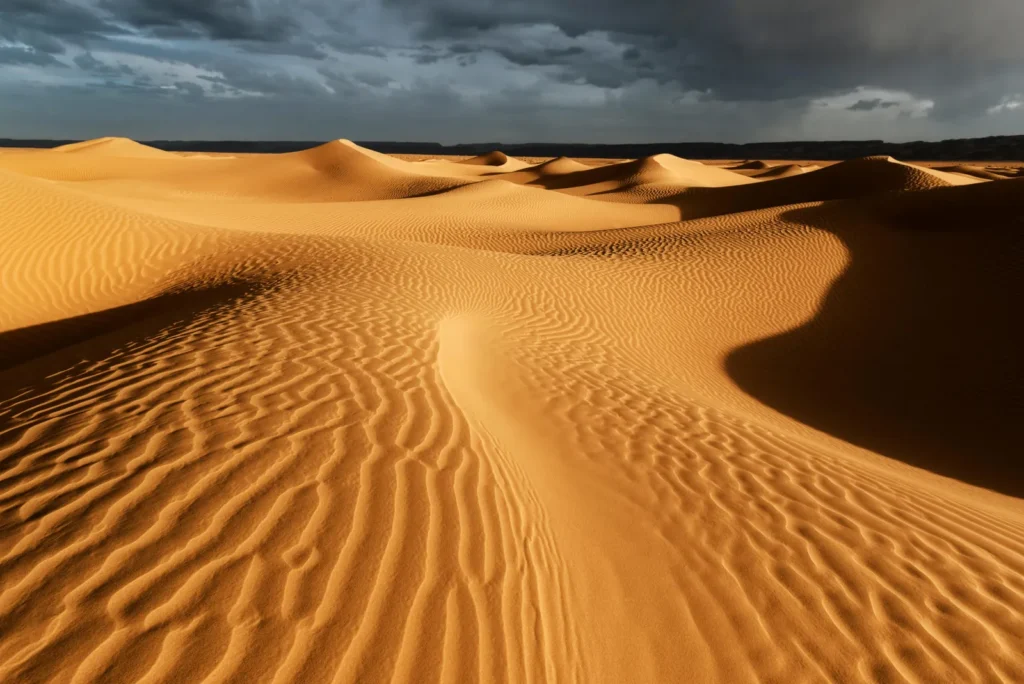
The Sahara Desert, spanning approximately 9.2 million square kilometers (3.6 million square miles), stands as the largest hot desert on the planet. Despite its reputation for extreme aridity and harsh conditions, this vast expanse of sand is not a barren wasteland, but rather a thriving ecosystem teeming with life.
Contrary to popular belief, the Sahara is not devoid of life. It is home to a remarkable variety of plant and animal species that have adapted to survive in this unforgiving environment. From towering sand dunes to rocky plateaus and dry riverbeds, the landscape of the Sahara is diverse and dynamic.
One of the most iconic inhabitants of the Sahara is the dromedary camel, also known as the Arabian camel, which has been a vital resource for nomadic tribes for centuries. These hardy creatures are well adapted to the desert’s harsh conditions, with the ability to store water and withstand high temperatures.
In addition to camels, the Sahara is home to a variety of wildlife, including fennec foxes, addax antelopes, and desert hedgehogs. These species have evolved unique adaptations to survive in the desert, such as nocturnal habits, heat tolerance, and specialized diets.
But it’s not just the flora and fauna that make the Sahara a remarkable place. The desert is also home to a rich tapestry of cultural traditions, preserved by nomadic tribes that have inhabited the region for generations. These tribes, including the Tuareg, Bedouin, and Berber peoples, have developed unique ways of life centered around survival in the desert.
From camel herding and oasis farming to intricate weaving and traditional music, the cultural heritage of the Sahara is as diverse as its landscapes. Nomadic tribes traverse vast distances in search of water and grazing land, following ancient migration routes passed down through oral traditions.
Despite the challenges posed by climate change and desertification, the Sahara continues to support life and sustain livelihoods for millions of people. Efforts to conserve and protect this unique ecosystem are underway, with initiatives focused on sustainable land management, biodiversity conservation, and community empowerment.
As the world grapples with environmental challenges, the Sahara serves as a reminder of the resilience of nature and the ingenuity of the human spirit. In the midst of adversity, life finds a way to thrive in the most unexpected places, proving that even in the harshest environments, there is beauty, diversity, and hope.
